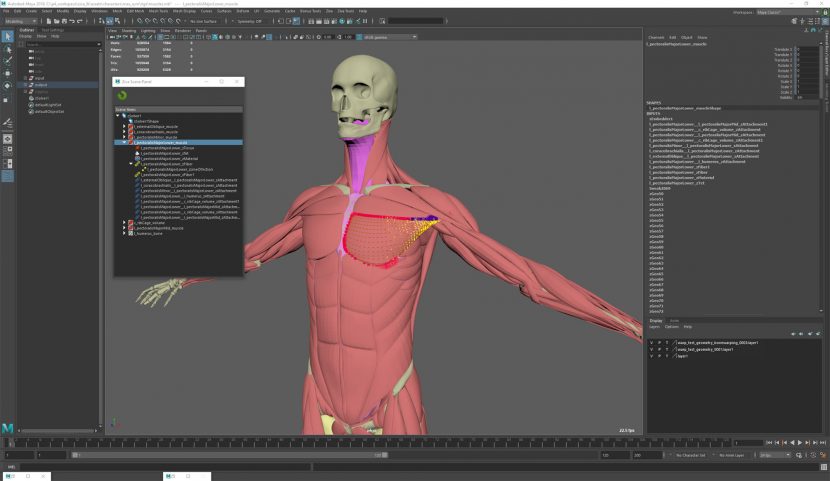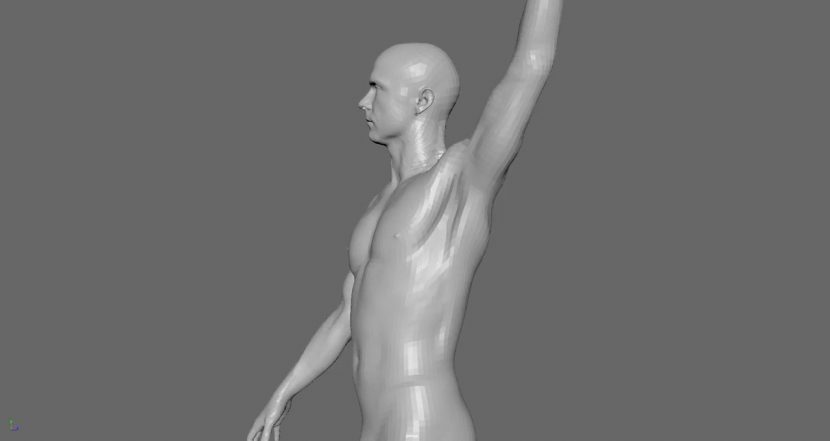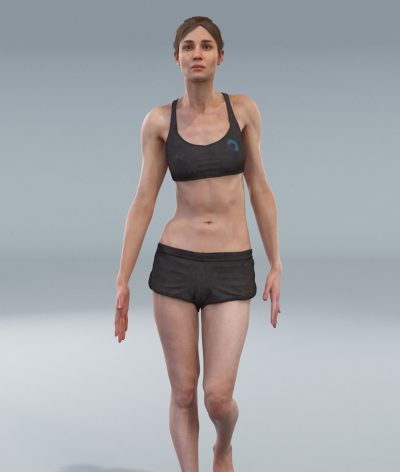Ziva VFX is a character creation technology that helps animators apply real-world physics to parts of the character creation process, including muscle growth, tissue tension, reacting to natural elements like heavy winds and water pressure.
Ziva Dynamics are experts in soft-tissue simulation technology which enables creators to generate characters with innate secondary dynamics. The company was founded in early 2015 by Academy Award winning VFX pioneer James Jacobs, who was formerly at Weta Digital. Jacobs won the 2013 Scientific and Engineering Award Oscar for the development of the Tissue Physically-Based Character Simulation Framework. He is now CEO and co-founder of Ziva in Vancouver. He formed the company with Jernej Barbic, who is the CTO of Ziva. Barbic is an expert on finite element (FEM) analysis, which is the method they use to achieve the really nice volume preserving, solid look and feel of the muscle system. In Ziva, every muscle is made as a tet mesh, and every muscle is attached to the other muscles and to the bones. You can paint the fibre field and then activate them anyway you want. It can be active or passive. Then, the muscles are solved with an implicit FEM solver. There is also an inbuilt cloth solver for fine quality skin detail. There is collision and self collision resolution, non-linear materials (real tissue is non linear) and anisotropic materials.
The input to the system is the skeletal motion and the software works out the muscle, fat and skin movement, including skin sliding and high level detail. This pipeline assumes that a character is built from the inside out, and then the skeleton movement will provide realistic movement. The team focus on bi-peds and quadrupeds but the software was most recently used on The MEG (see our story here).
The company invests heavily in R&D, comments Jacobs, as “over 75% of our engineering resource allocation has been on R&D since we started 4 years ago, hence the reason we are hiring a number of positions at the moment, to increase our product development and shipping capabilities/speed.” (see their site here)
Ziva’s tools are in use at companies such as DNEG and Rising Sun Pictures. Ziva’s technology fundamentally changes the character creation process by combining the effects of real-world physics with the creation of soft-tissue materials like muscles, fat and skin. By mirroring the fundamental properties of nature, users can produce CG characters that move, flex and jiggle just as they would in real life, removing difficult steps from the rigging process.
Ziva’s character tools have really worked out for us,” said John Hughes, Founder of Rhythm & Hues and Tau Films. “The updates speed up simulations and give artists even more control and creative flexibility. Our creature pipeline is really hitting its stride.”
Digital Human Characters

Ziva sells rigged characters for use in games and entertainment. Sold as a pair, the Max and Ada virtual humans are Maya anatomical rigs can be easily manipulated to form other bipedal characters or used as is for high-detail, physics-embedded human characters of any height, weight, or shape. Both builds are complete with detailed UV coordinates and standard animation so you can quickly visualize the realistic bending, stretching, flexing, and jiggling of the virtual bodies. The characters come with a free 5 years of relevant character upgrades.

Recent new Tools
The range of things that can use Ziva is not however limited to bipeds, quadrupeds, or even sharks. The Ziva team have even seen a client rig a sofa (couch) with their tools! To accommodate the wide range of uses of the software, the team has been pushing out a lot of updates and extensions in the last 12 months. The latest is version 1.4.
The recent 1.4 release of Ziva
Tools include External Forces, which allows users to accurately simulate how natural elements like wind and water interact with their characters. Making a character’s tissue flap or wrinkle in the wind, ripple and wave underwater, or even repel towards or away from a magnetic field can all be done quickly, in a physically accurate way.
Other tools such as Pressure and Surface Tension can be used to “fit” fat tissues around muscles, augmenting the standard Ziva VFX anatomy tools. This allow users to remove fascia from a Ziva simulation while still achieving the detailed wrinkling and sliding effects that make humans and creatures look real.
There is also Muscle Growth which can increase the overall muscle definition of a character or body part without having to remodel the geometry. A Rest Scale for Tissue feature was also recently added, letting users grow or shrink a tissue object equally in all directions. Not only do these tools improve collaboration between modelers and riggers, but they also increase creative control for independent artists.
This allows an artist to bulk up muscles without having to go back to the modelling department, in the rest stage, an arm can be bulked up and then all the fibres and firings are correctly preserved, including intersections etc. This can be an overall effect, or something that happens during the simulation, “in a kind of Bruce Banner/Hulk way,” explains Jacobs.
With Ziva VFX 1.4, there was also the introduction of Ziva Scene Panel, which helps artists working on complex builds visualize their work in a compact way. Ziva Scene Panel’s tree-like structure shows all connections and relationships between an asset’s objects, functions and layers, making it easier to find specific items and nodes within a Maya scene file.
“With Ziva VFX 1.4, artists are able to make faster changes at every stage of the design process, in a more intuitive way,” said Jacobs. “As the need for realism grows, artists are constantly being asked to break the mould. With Ziva VFX, they can.”
Ziva’s physics-based character animation system uses computational resources in lieu of exhaustive artist effort to produce physically realistic images and animations. This principle has been used for years in rendering, fluids, and cloth simulation. Ziva now provides similar savings and realism for character movement, provided by a physics and anatomy based approach to characters that cannot easily be matched by any other approaches.
Best Friend: Pig
An example of a recent Ziva project was a Mackevision PETA Best Friend spot for Director Nathalie Lamb, (Prod Co.: Filmakademie Baden-Württemberg GmbH).
The challenge for the film makers was not only to make the piglet in the spot look cute, he also had to look completely real and not like an imaginary friend/pet, which would have completely undermined the narrative. But bringing a real, live animal to the shoot was out of the question. “It contravenes PETA’s guidelines to involve live animals in any way,” confirms Julian Körrenz, the project’s Compositing Lead. The only things on set were the actors and the scenery. Rouven Dembrowski, the project’s VFX Set Supervisor captured the lighting in HDRIs (High Dynamic Range Images) as well as photographs so the environment could be reconstructed at a later stage using photogrammetry.
The pig’s realism relied on Ziva. The more familiar a creature is, the more important it is to get the details right. And when it comes to pigs – well, everyone knows how they move. The pig was brought to life by building up an “imitation version”. This means creating a skeleton, then the muscles, fascia, fat, skin and fur – layer by layer, right up to the finished animal. And all anatomically correct. For the movements to look real, for example, the muscles must be attached to the right bones.


